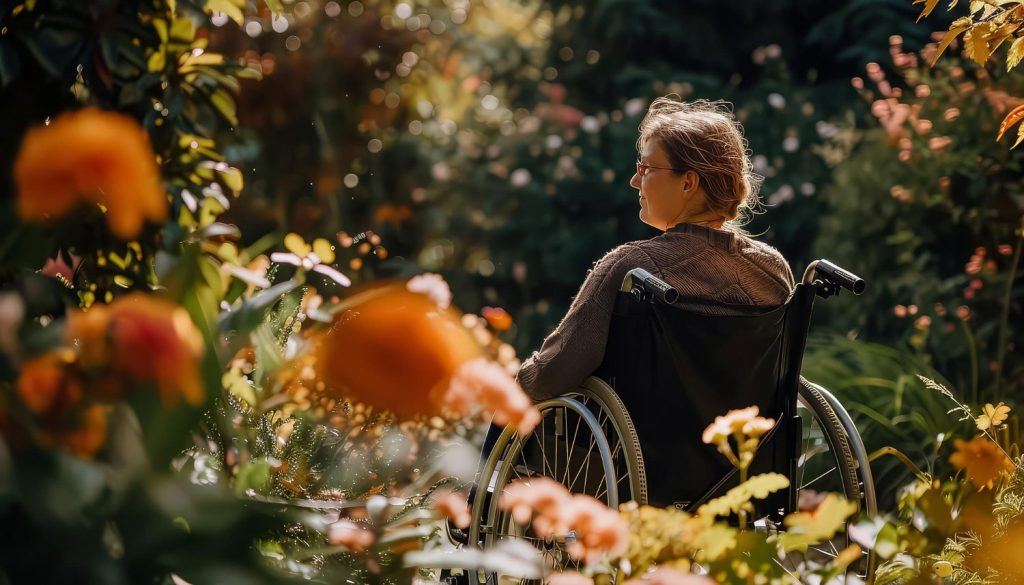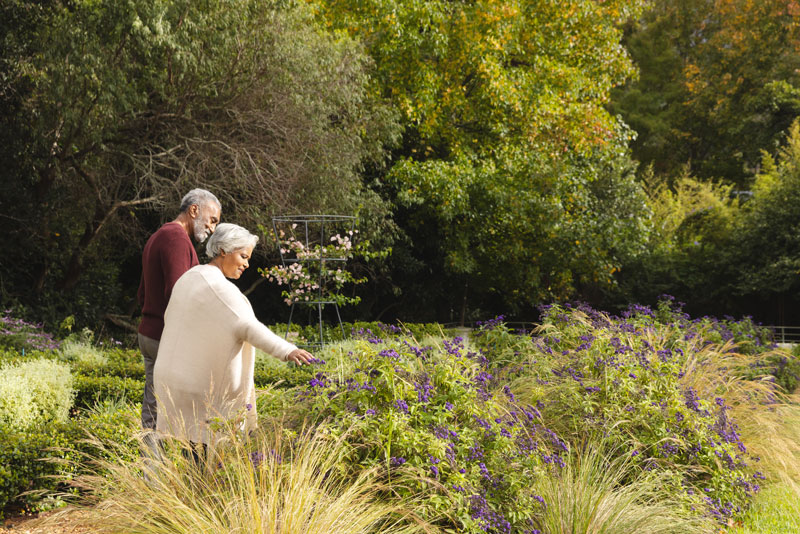Meaning
The term Healing Garden is often associated with the green spaces of facilities in health care, rehabilitation, and other therapeutic settings that are designed and built with the purpose of creating a place of refuge aimed at improving the health status, mental and physical, of patients but also reducing the stress of family members and health care staff.
The positive effects on patients
Of course, nature can benefit everyone, even outside the health context, reducing phenomena of violence and urban decay, improving mental health and people’s well-being as highlighted by the first report on the measurable effects of nature on human health in 1984, followed by further studies in the 1990s. So any well-designed green area, from the private garden to the public park, can reduce depression and anxiety in a path of individual or collective balance but Healing gardens are born to make nature engaging and relaxing in certain contexts. The biologically intrinsic role of the environment for human beings is the basis of many researches and schools of thought, according to some of which man finds in the natural environment a refuge with restorative potential where he can exclude the continuous stimuli to which the daily frenzy often subjects him, thus reducing mental fatigue, which is even more evident in patients subjected to stress; not only psychological but also physical benefits have been demonstrated by several studies conducted on hospitalized people.

A garden as a safe place, a refuge separated from the surrounding external space, which gives the visitor the feeling of being safe and inside which they will find one or more rooms made mainly with living material, i.e. with growing and continuously changing plant species, as a manifestation of life.
Making the human being an integral part of nature, allowing him to experience three-dimensional space and time with all his senses: rejoicing at the blooming of flowers, still marveling at the scent of a rose, feeling light as he is carried away by the rustling of leaves in the wind, in an environment where the so-called “flow experiences” create a total harmonization of the individual with the natural environment.
Sensory involvement at the basis of the project
Health benefits come from personal activities and experiences: colors, shapes and scents can help in a path aimed at giving the individual a better vision of his abilities and his identity, also recalling remote memories. But to achieve certain goals a Healing garden must be able to communicate with the visitor on many levels, be designed according to precise criteria, not only of design, in which accessibility to facilities and furnishings for patients must be excellent, where the paths are gently graduated and equipped with handrails, with benches positioned in several strategic points and which are shaded during the warmer months, where there are water sources easily reachable within a short distance and with raised work surfaces intended for horticultural therapy as well as raised flower beds where you can smell or touch flowers and leaves in a selection of plants focused on color, texture and fragrance.

A well-designed healing garden is in fact capable of stimulating sight but also other senses such as hearing, smell, taste and touch throughout the seasons, in a continuously changing process that also does not depend on careful planning of the greenery since man has always communicated, not only with words, with the world around him. These types of spaces must be designed in close collaboration with clinical staff precisely to understand the needs of end users; perception and activity must be intrinsic to the design and implementation with the aim of creating an interdependence between visitor and garden, a fusion of mutual belonging thus reducing anxiety and isolation in the human person.
Spending time in a therapeutic green space detached from the sterile hospital environment, can help speed up recovery time making this more enjoyable both for patients, strengthening their self-esteem and independence, and for healthcare personnel with a view to efficient and effective management of resources.



